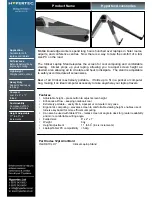
139
If Something Goes Wrong
Resolving a hardware conflict
Memory problems
Incorrectly connected or faulty memory modules may cause errors
that seem to be device-related. It is worthwhile checking for these
first:
1
Click Start, Turn off computer.
2
Click Turn Off.
The operating system shuts down and turns off the computer
automatically.
3
Remove the memory module, following the instructions in
“Removing a memory module” on page 45
.
4
Reinstall the memory module, following the instructions in
“Installing a memory module” on page 40
, and making sure the
module is seated properly.
5
Check for the error again.
6
If the error recurs, remove the memory module entirely and
check for the error again.
If removing the memory module eliminates the error, the
memory module may be faulty. If the error recurs without the
memory module installed, the error is not caused by the
memory module.
Power and the batteries
Your computer receives its power through the AC adaptor and
power cord/cable or from the system batteries (battery, optional
high-capacity battery, and real-time clock (RTC) battery). Power
problems are interrelated. For example, a faulty AC adaptor or
power cord/cable will neither power the computer nor recharge the
batteries.
Here are some typical problems and how to solve them:
The
AC
power light does not come on when you plug in the
AC adaptor and power cord/cable.
Make sure the AC adaptor and power cord/cable are firmly plugged
into both the wall outlet and the computer.
If the AC power light still does not come on, check that the wall
outlet is working properly by plugging in a lamp or other appliance.
















































